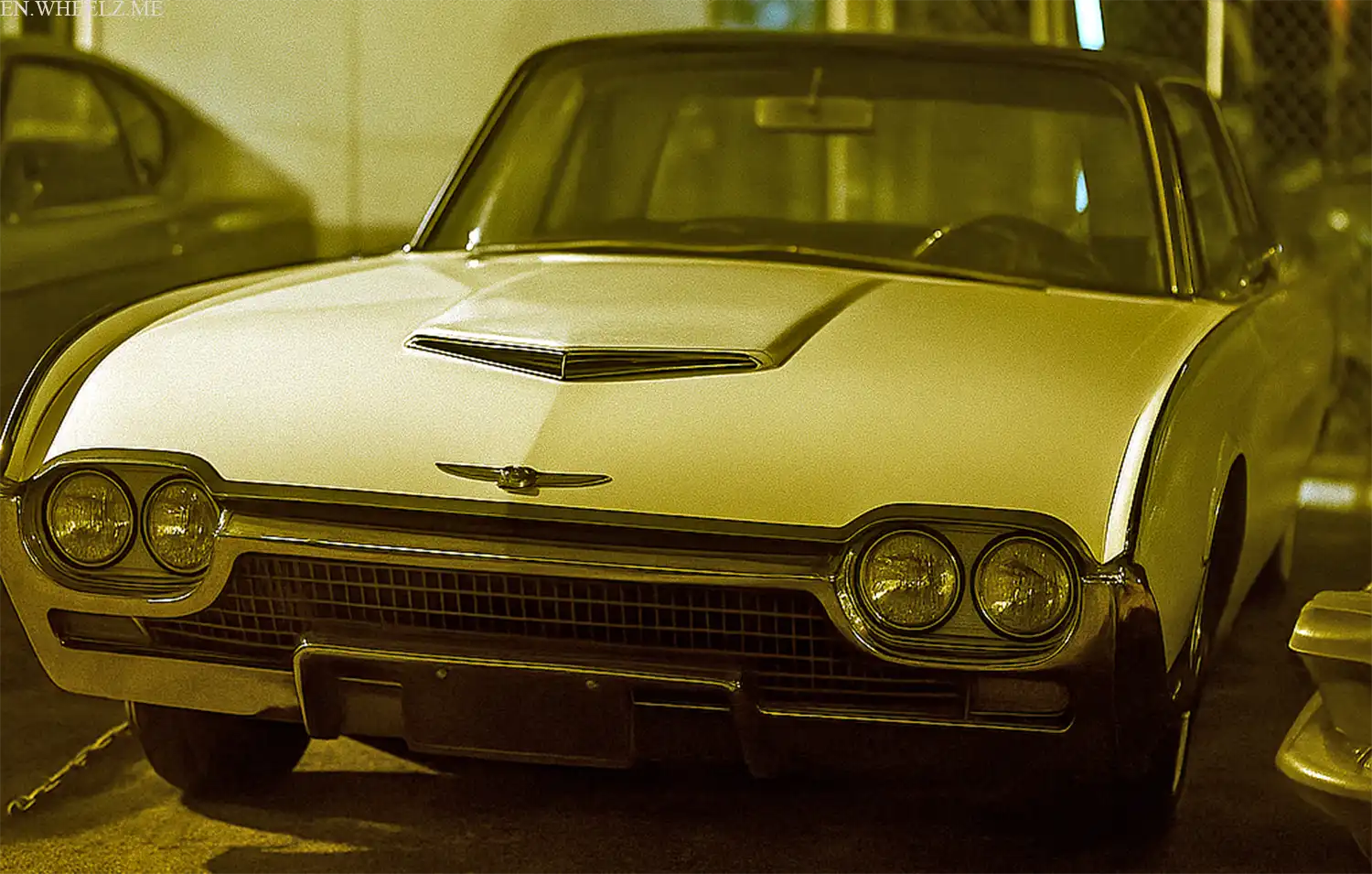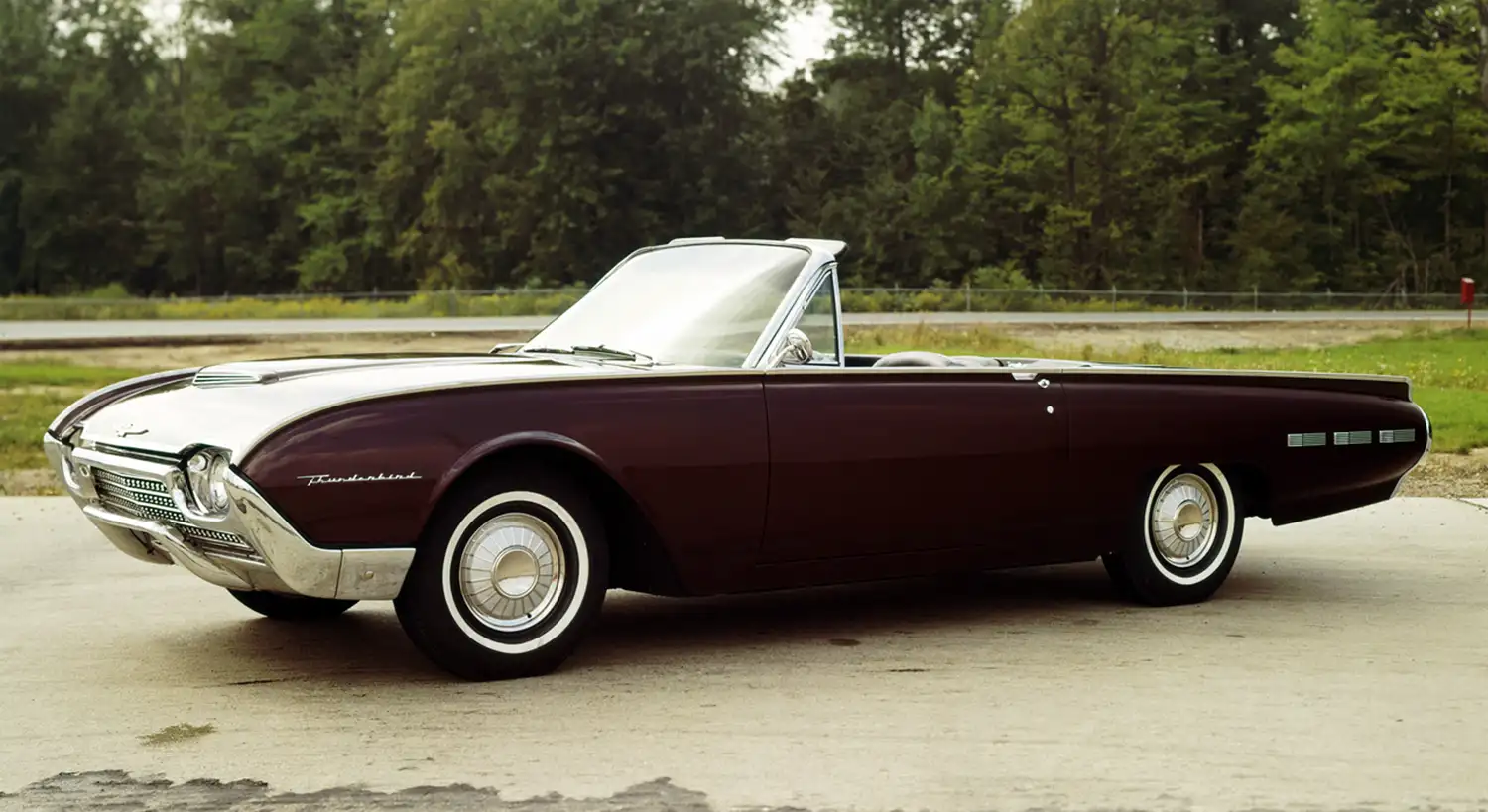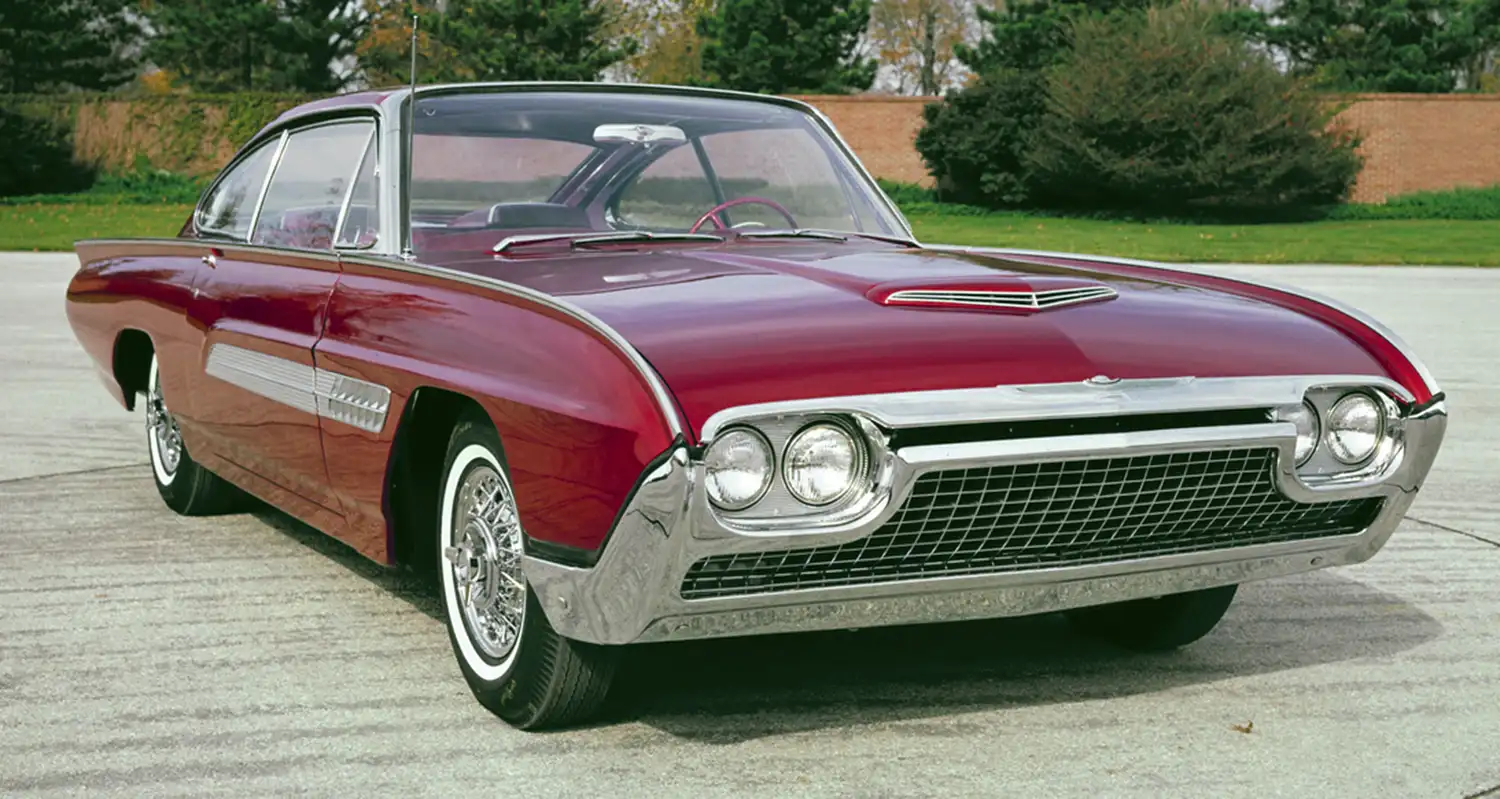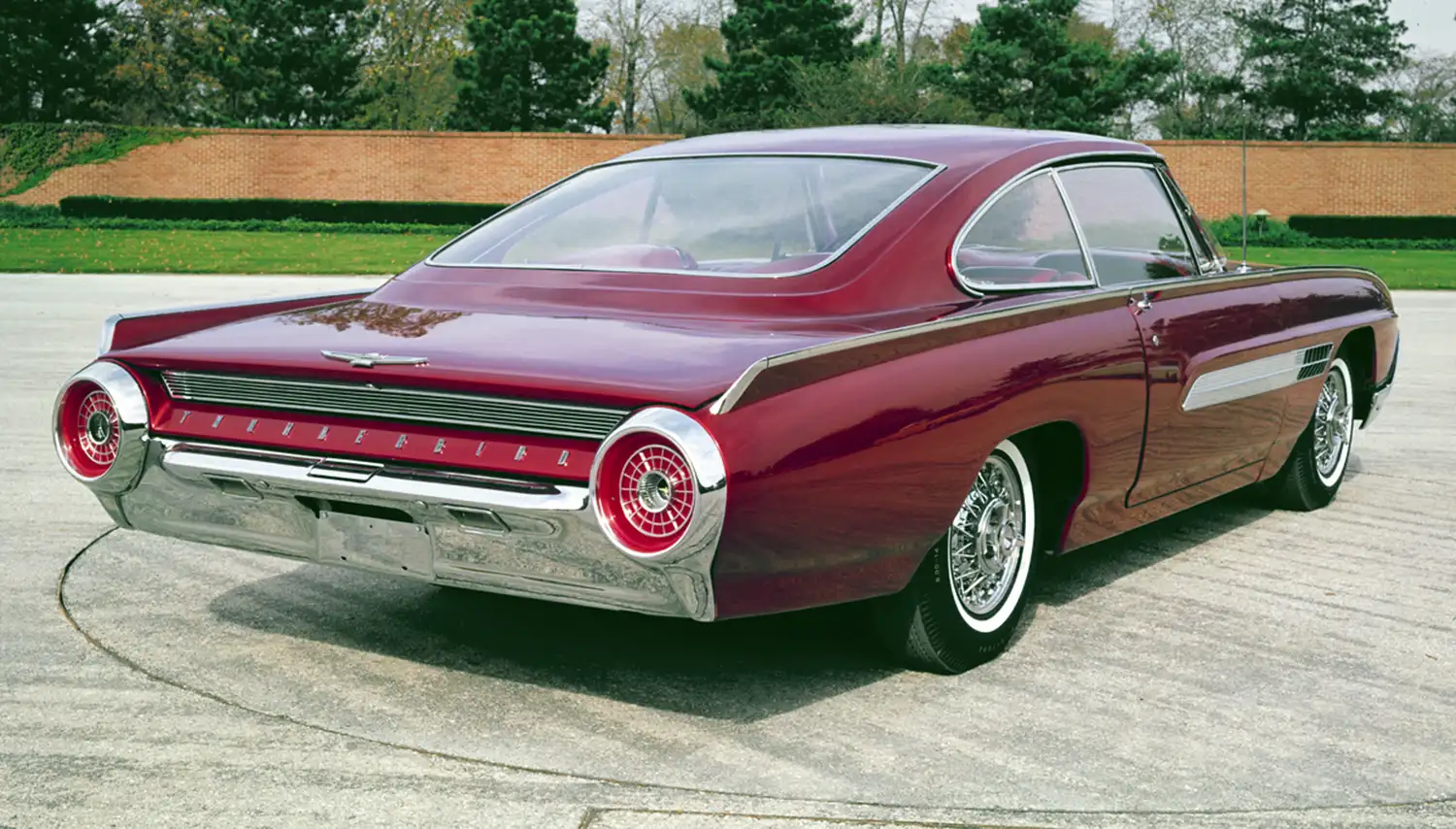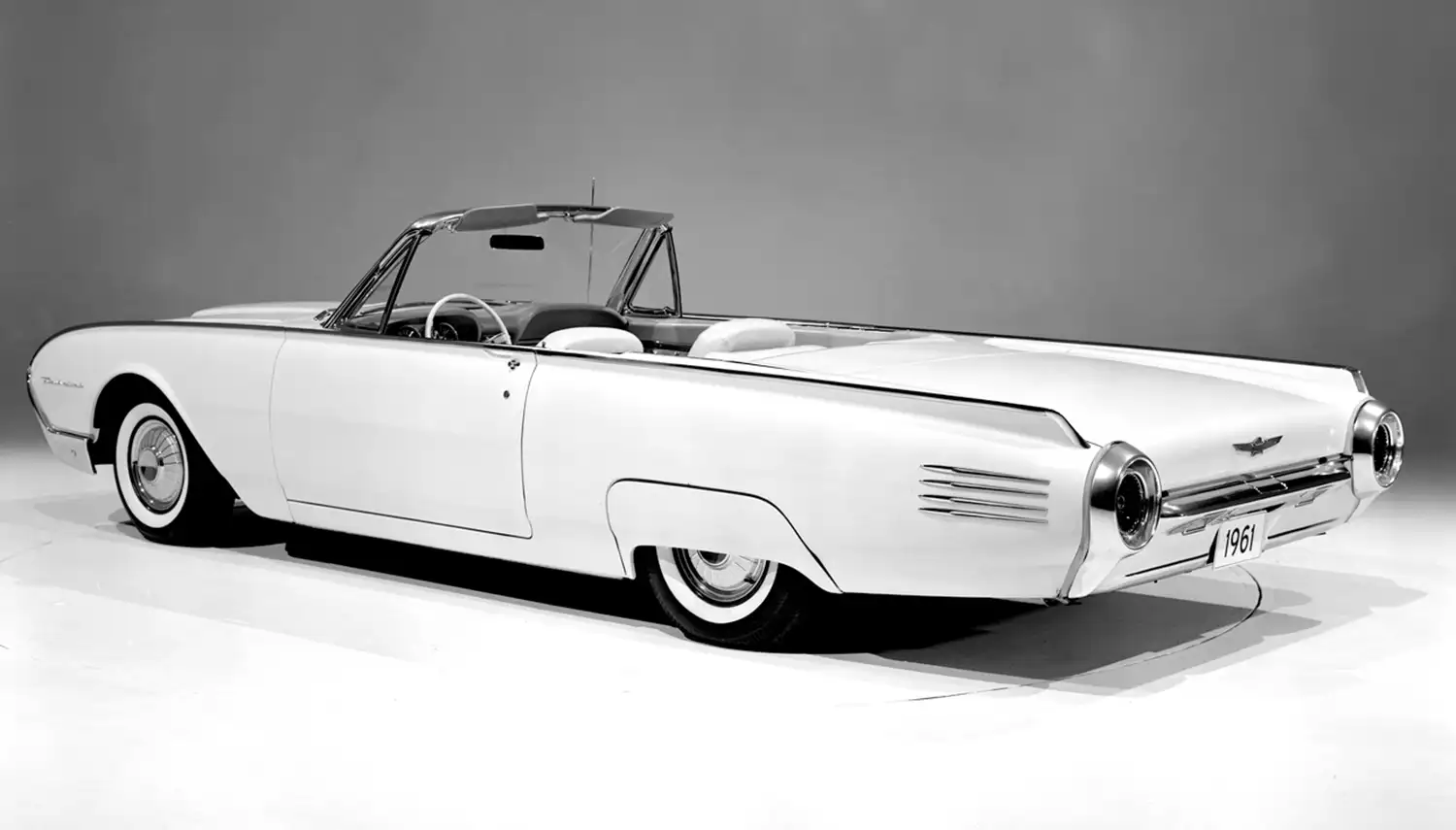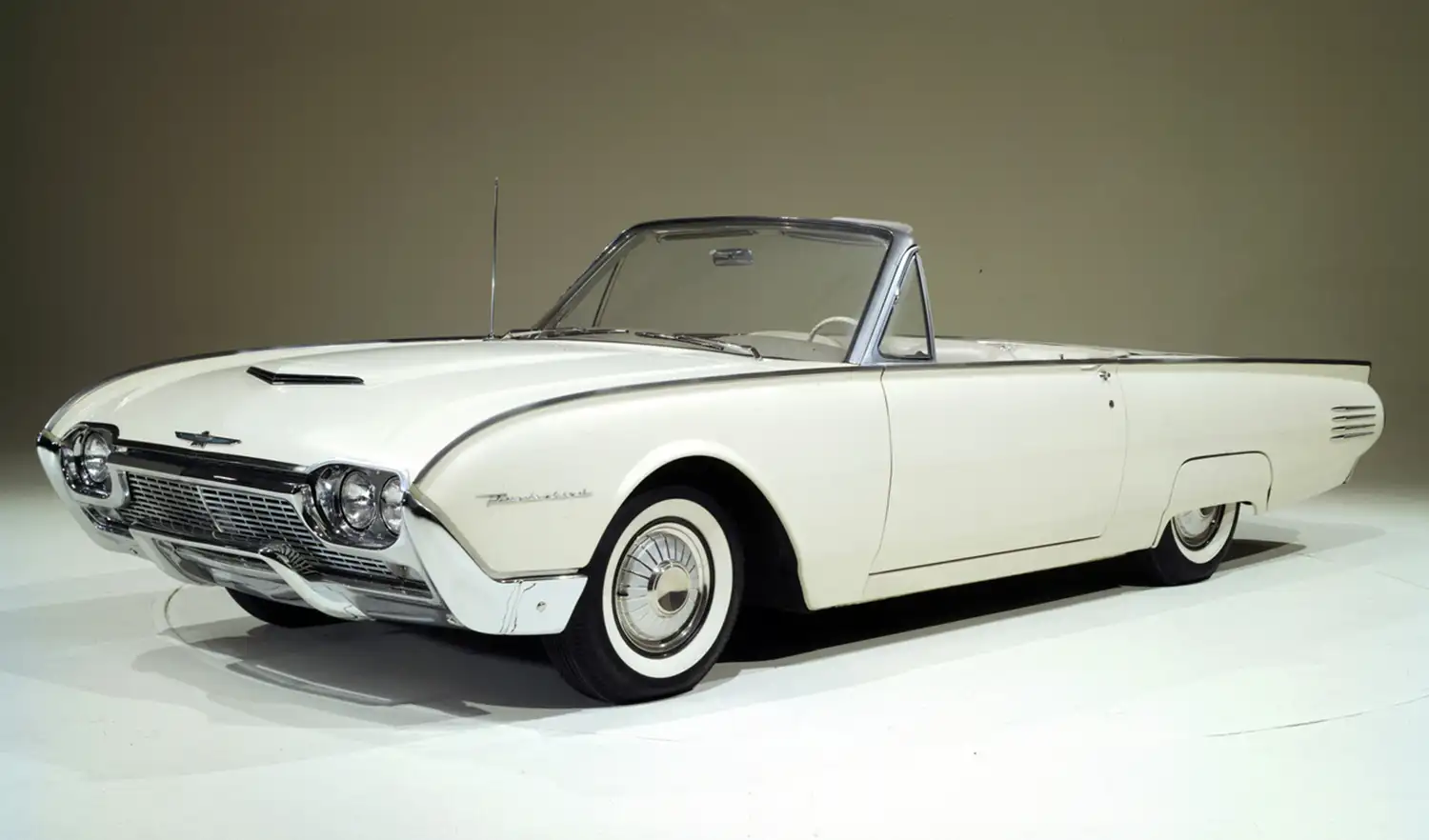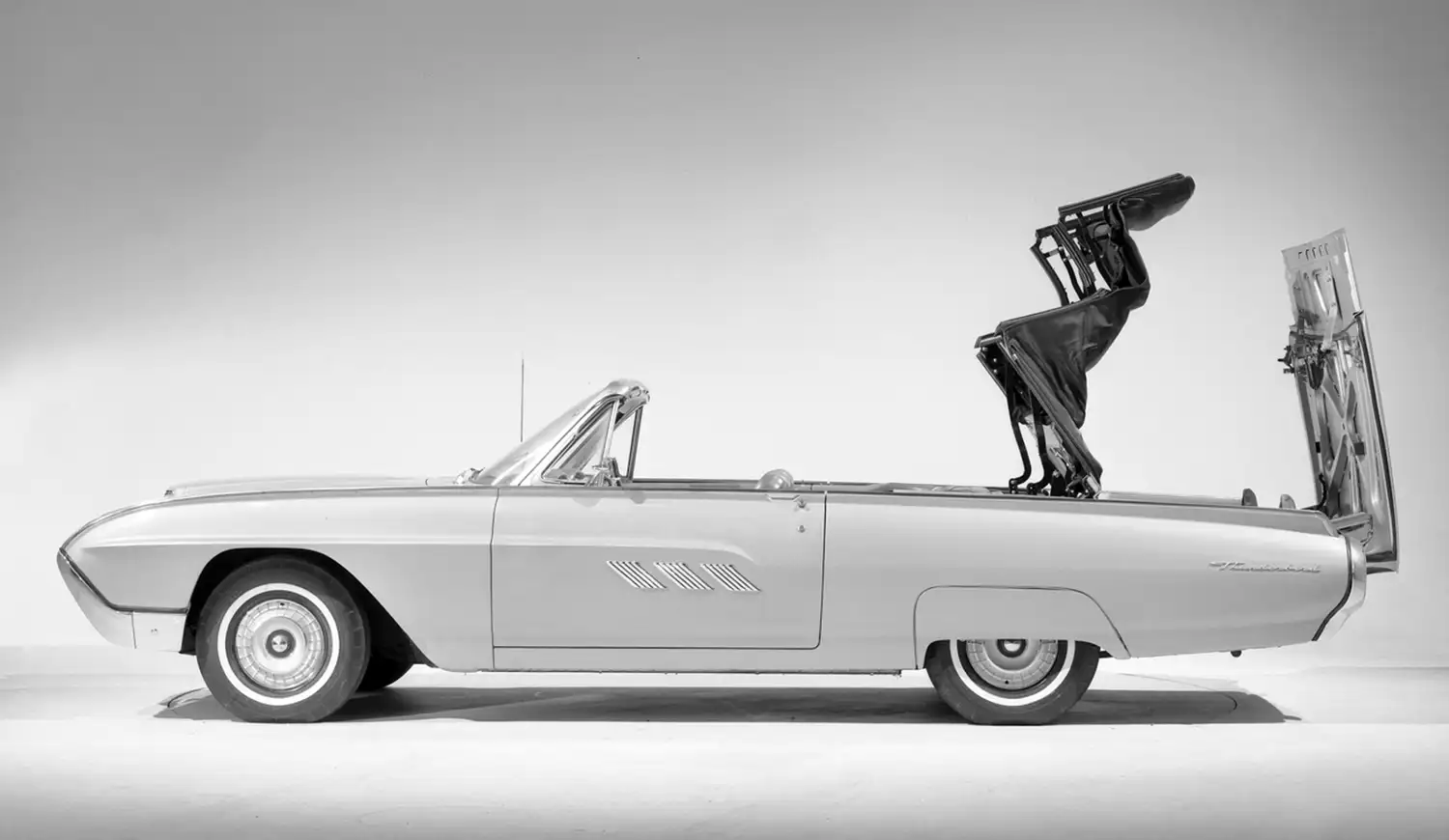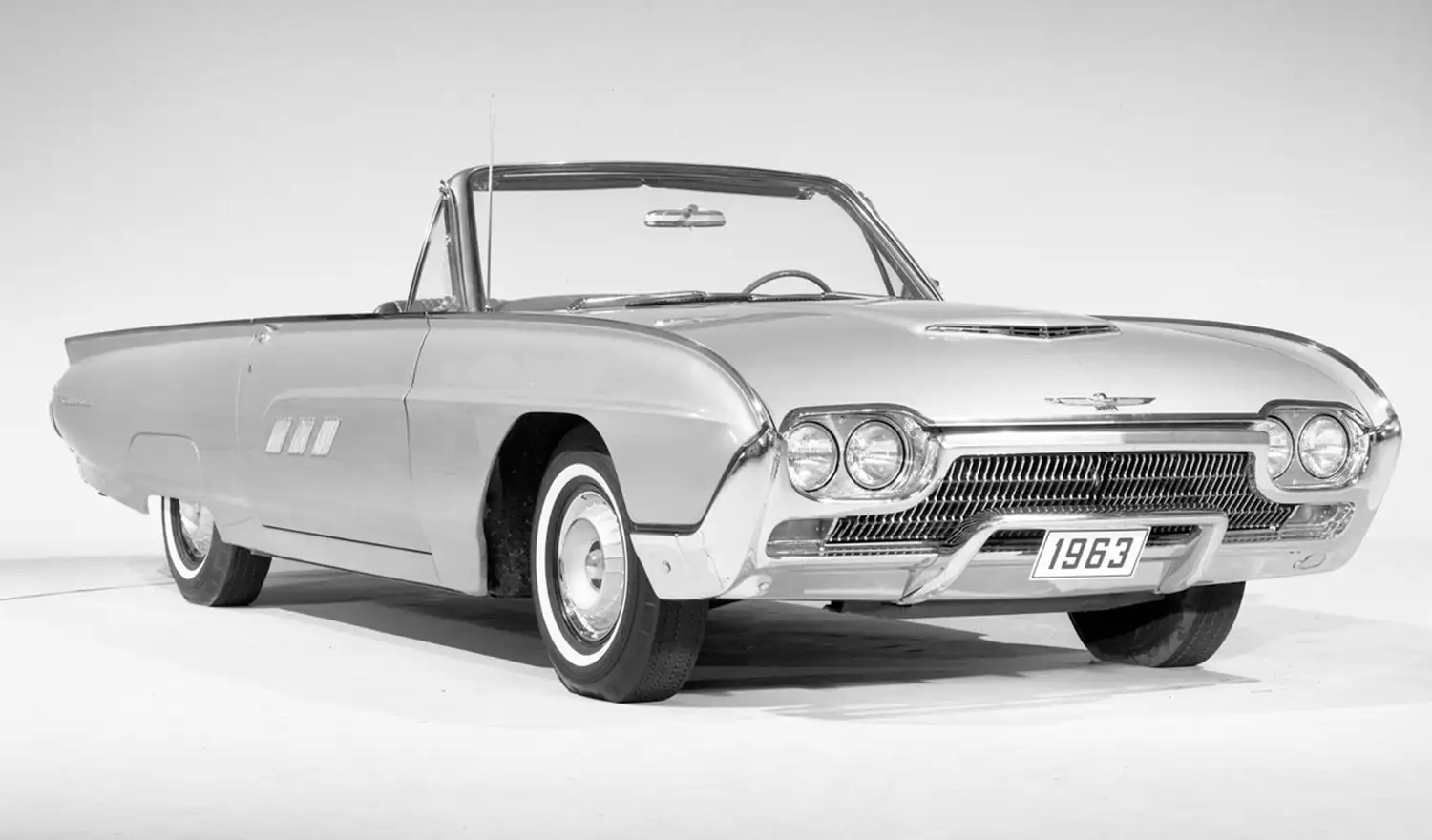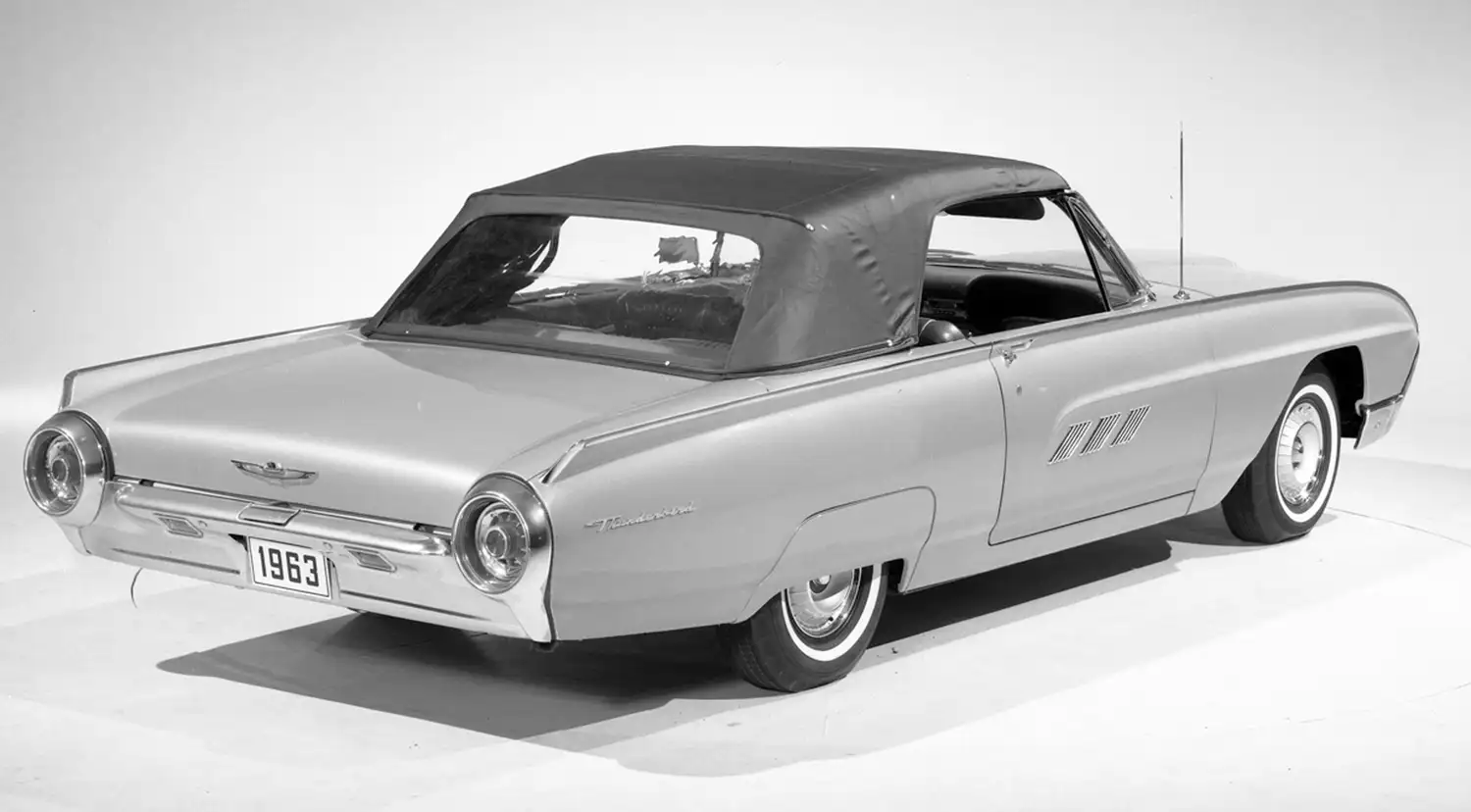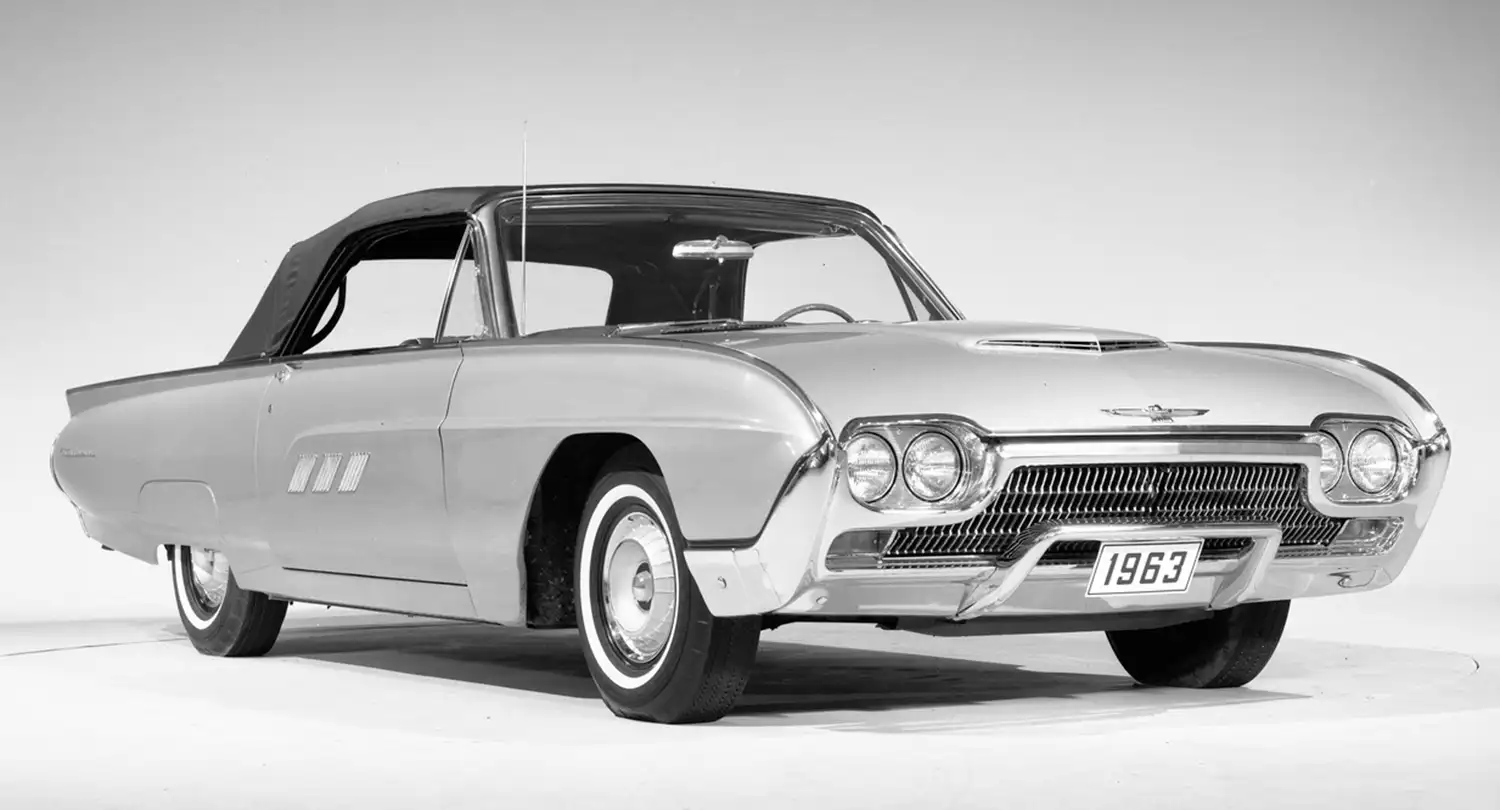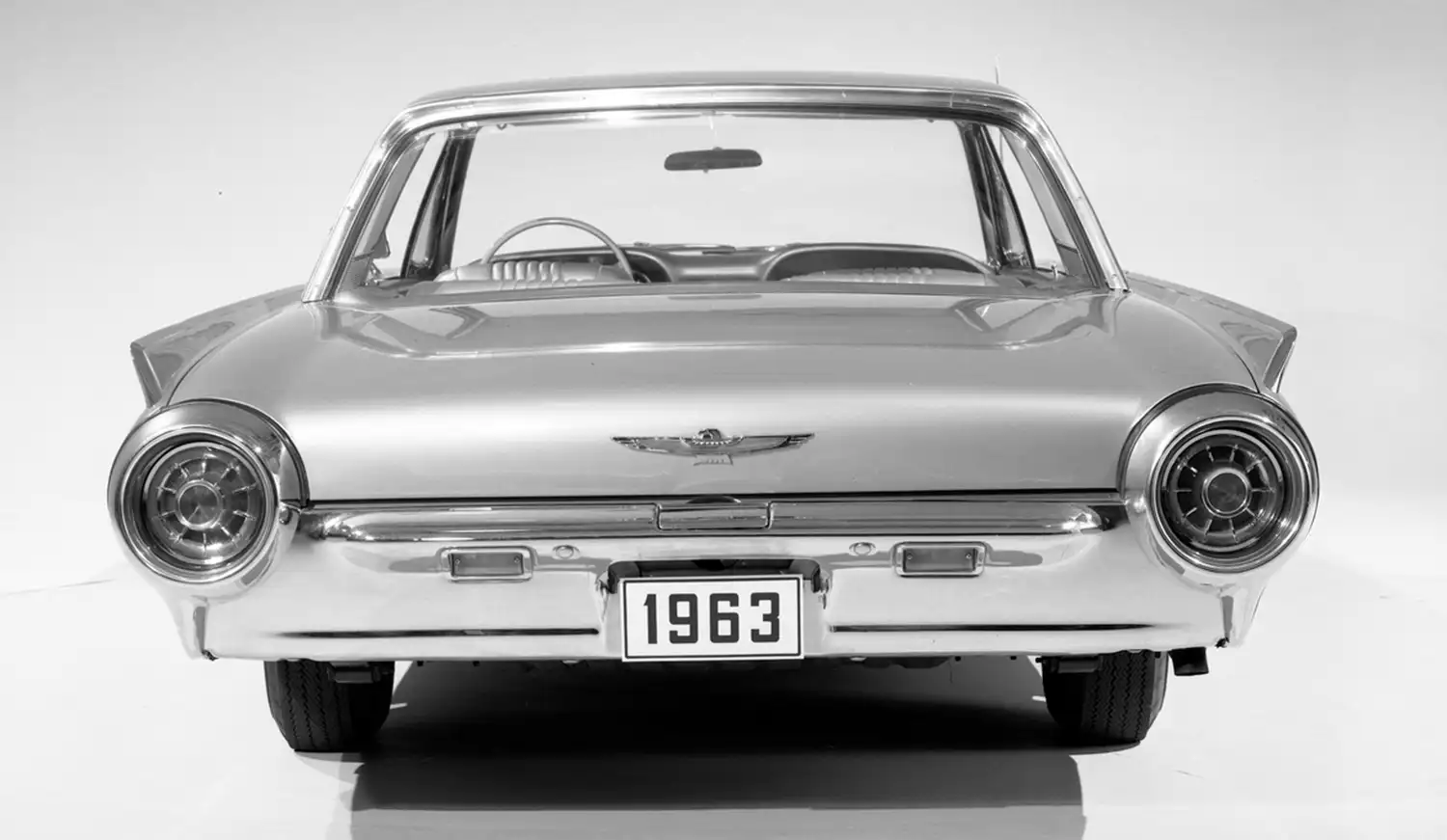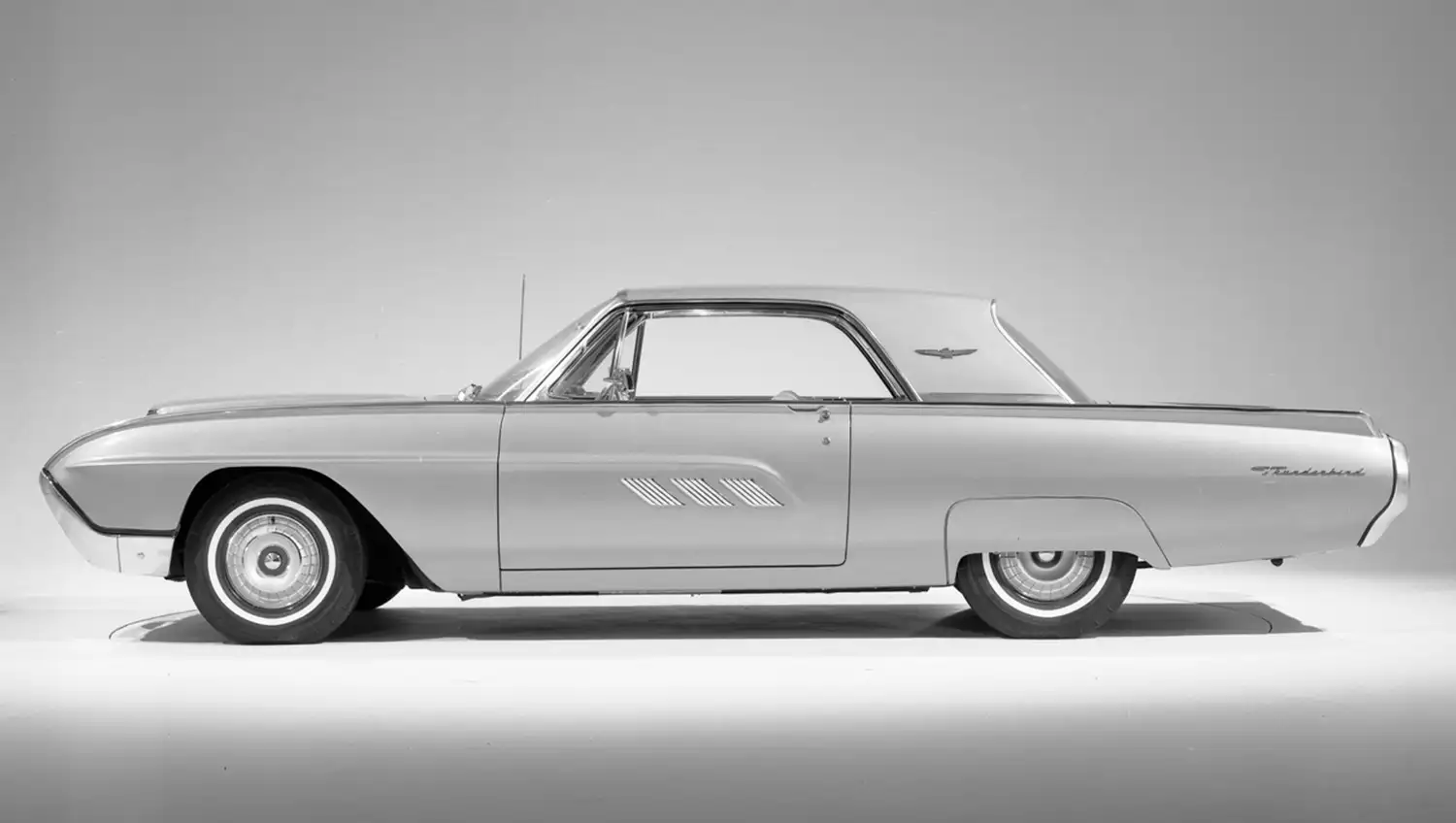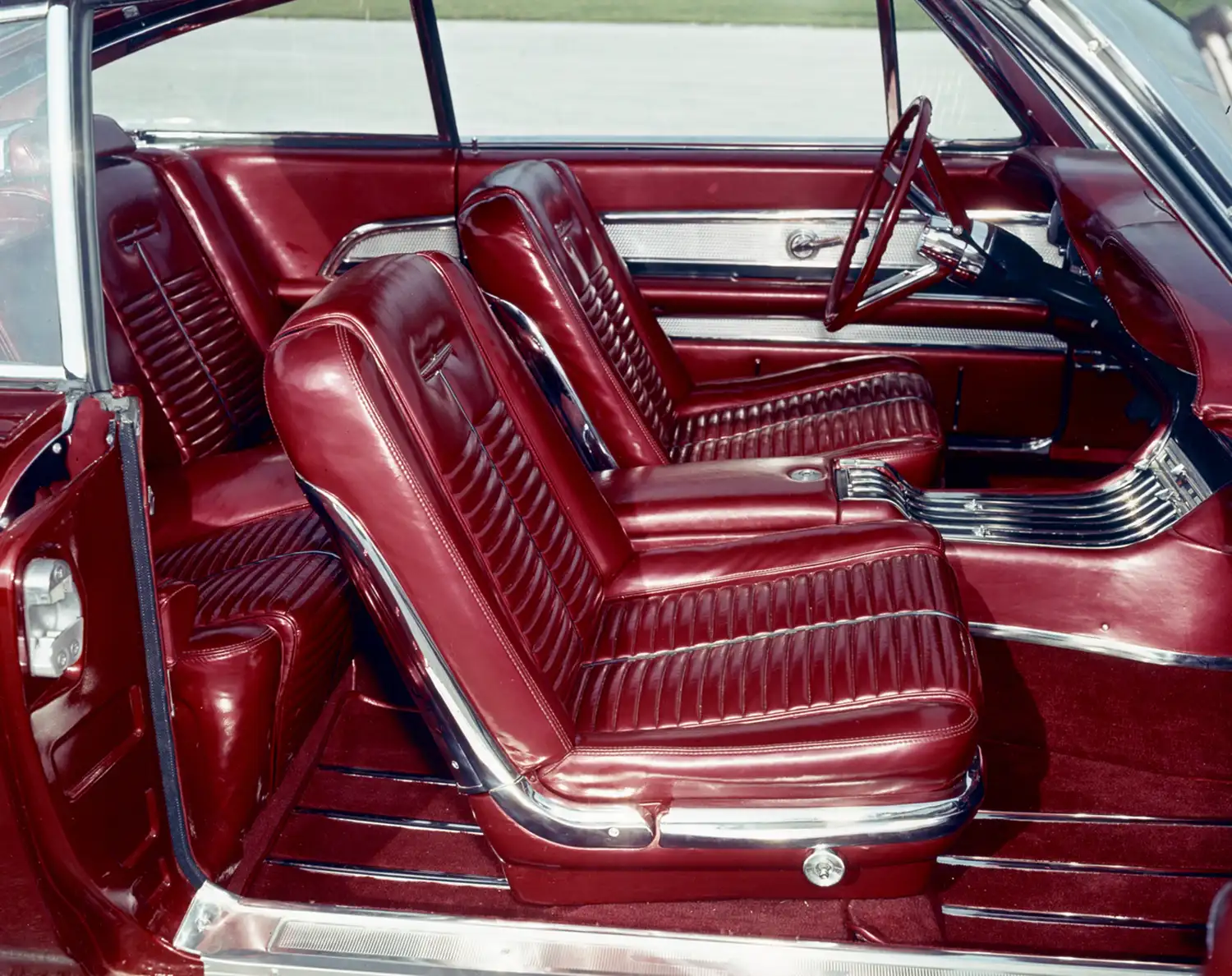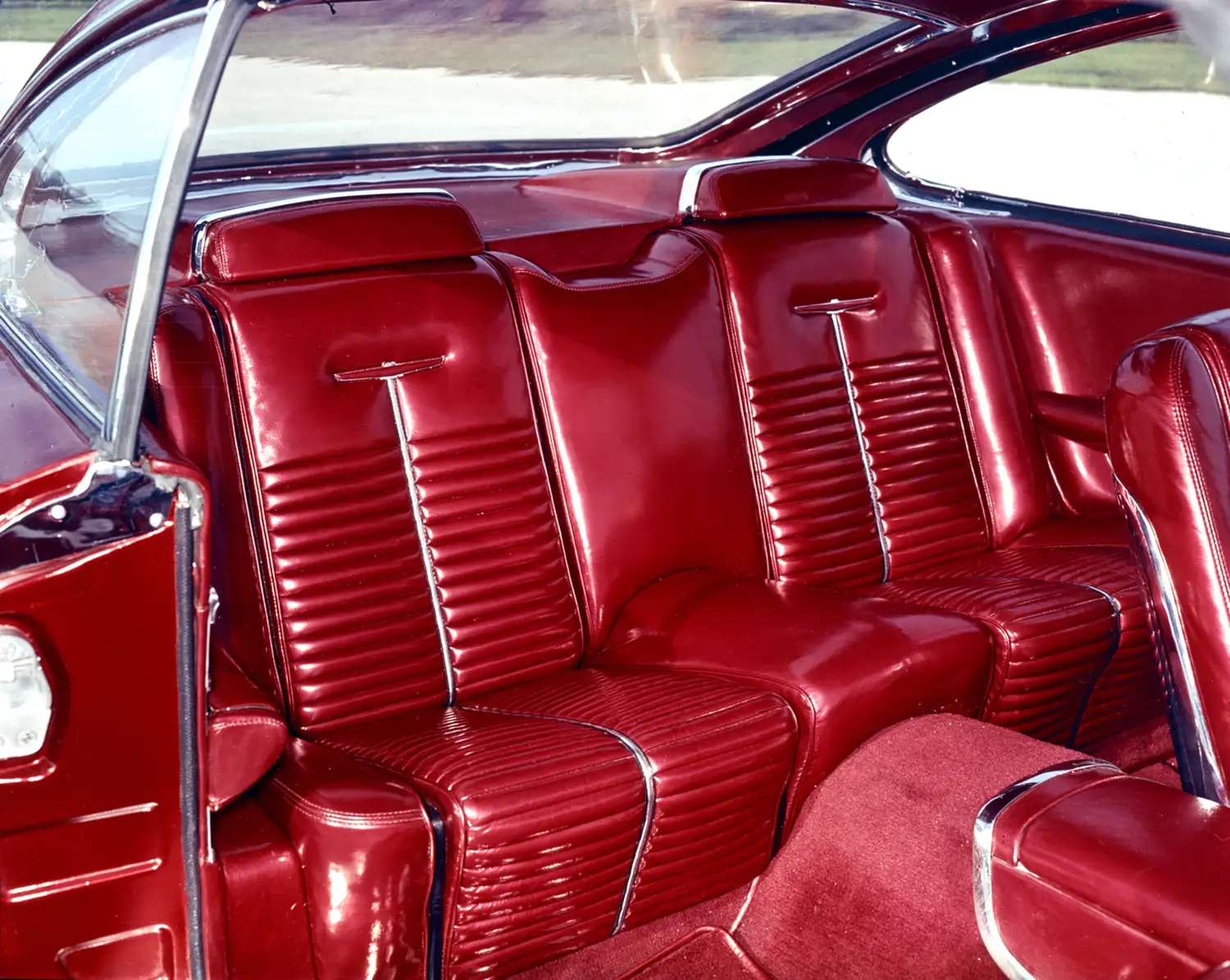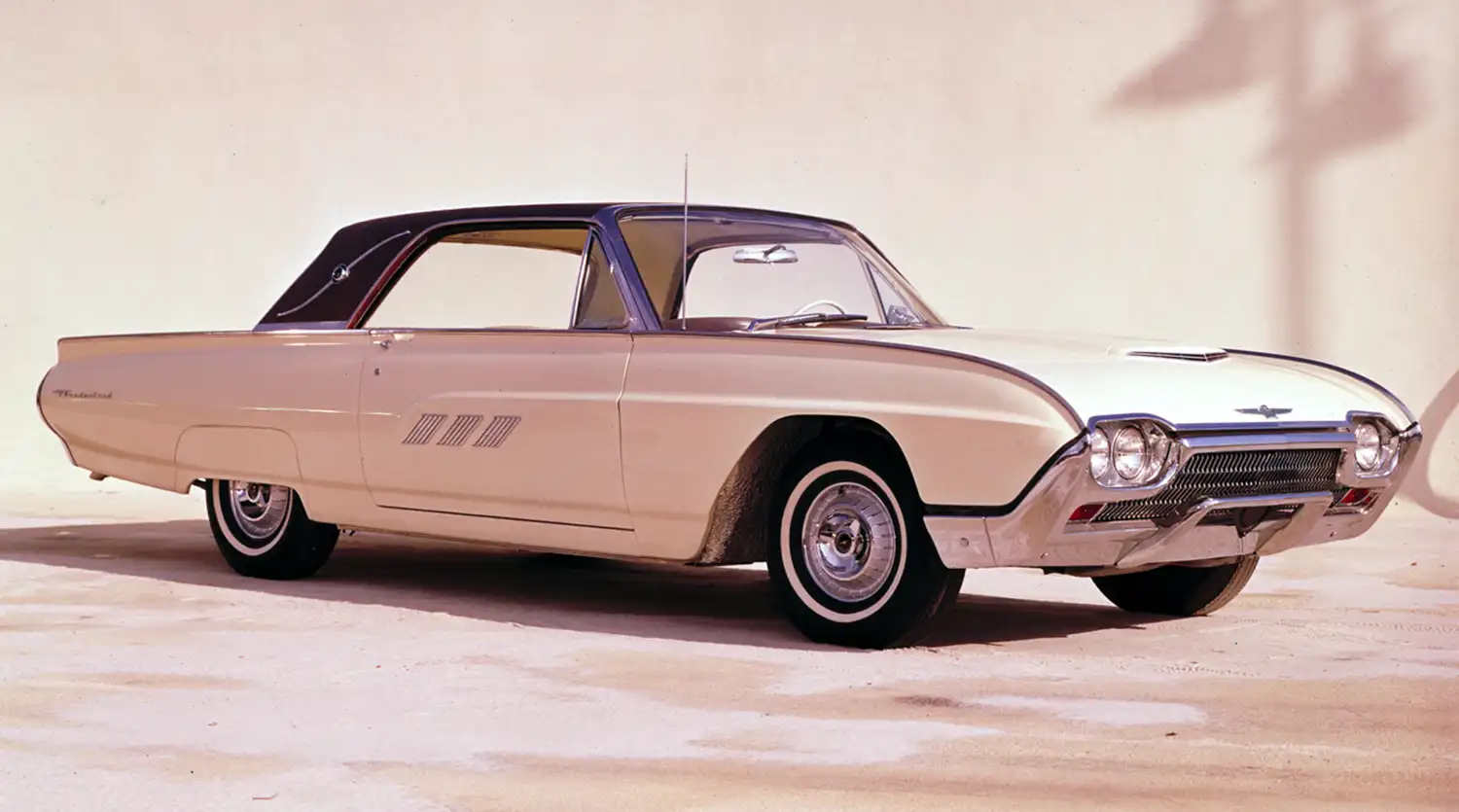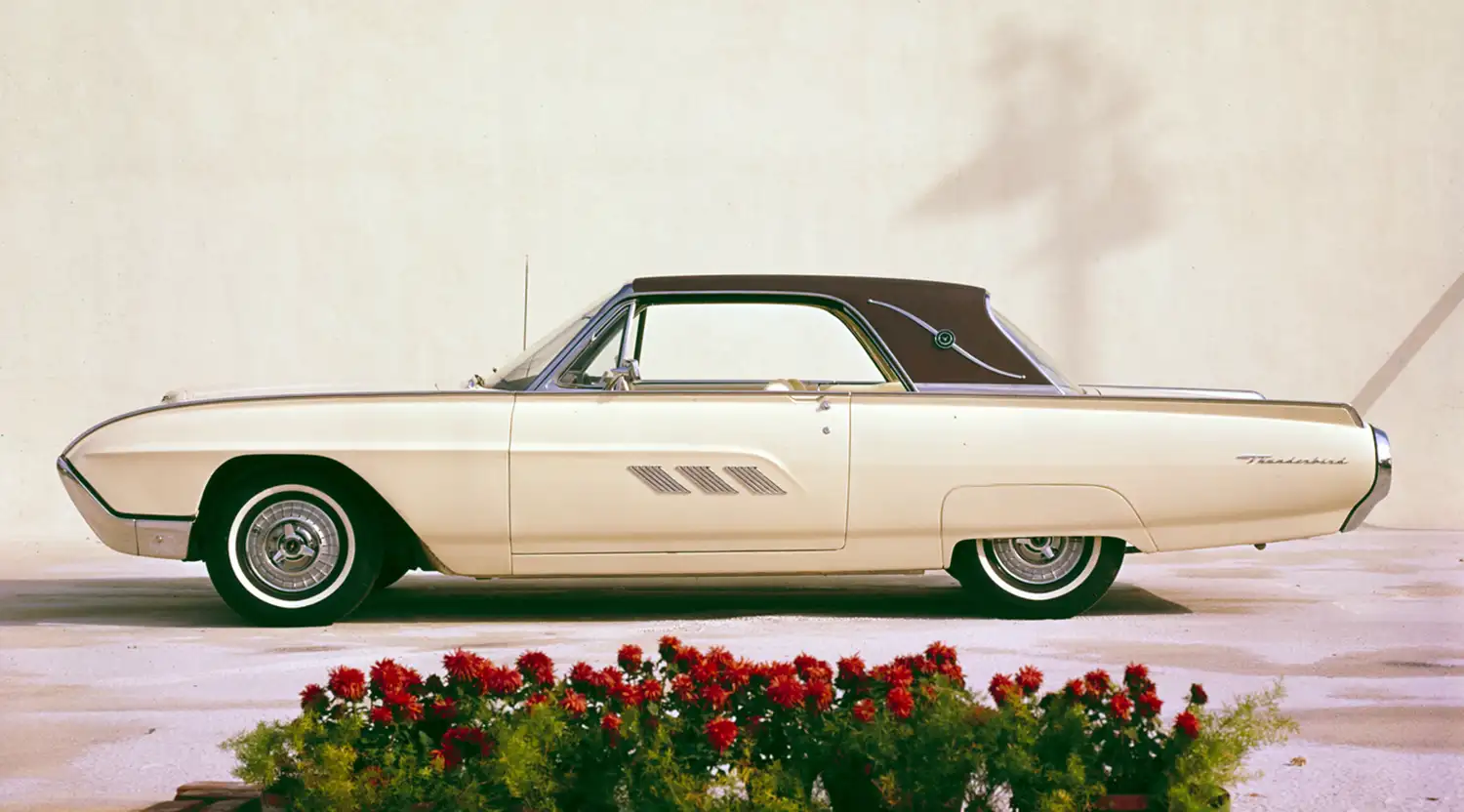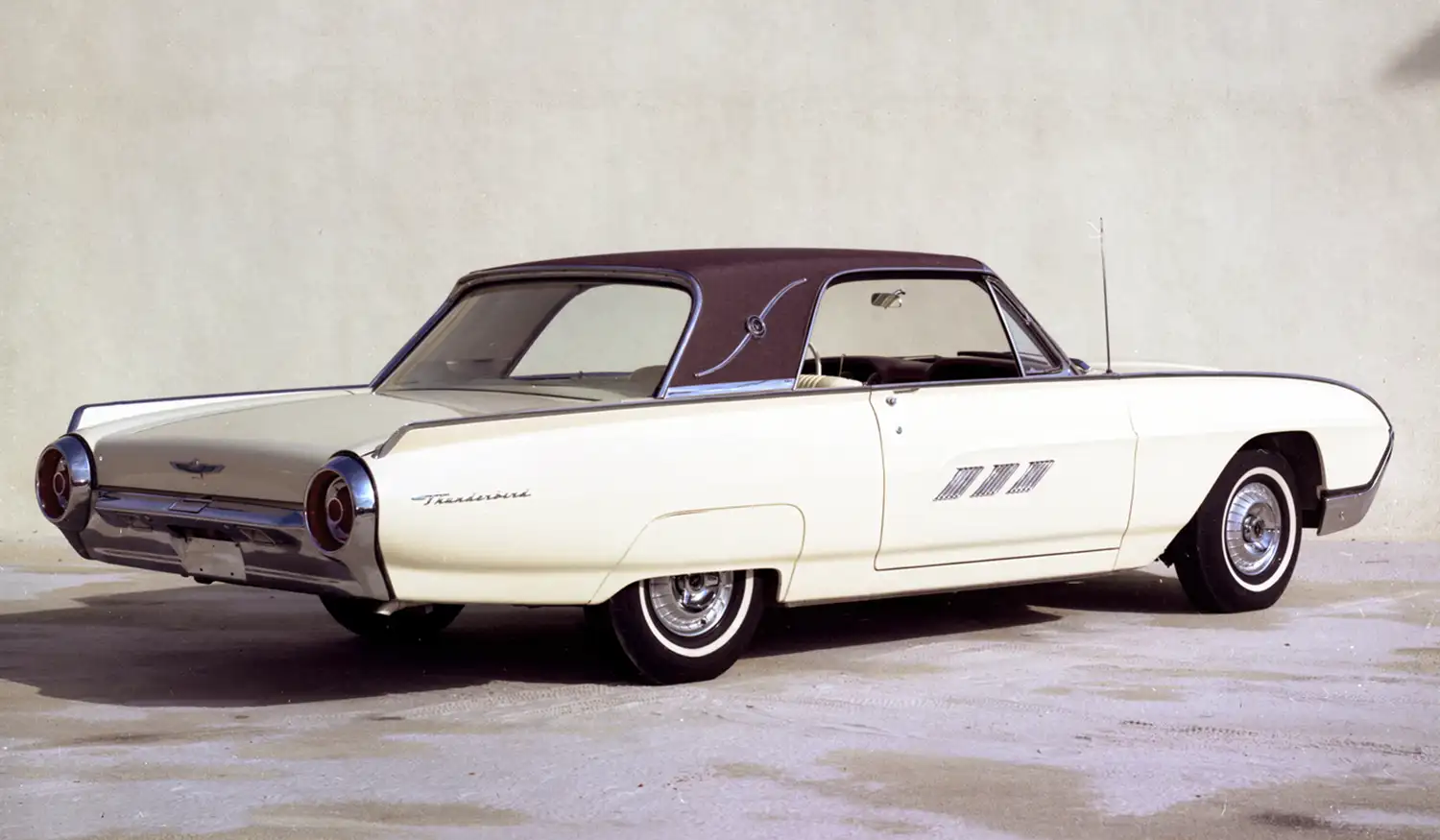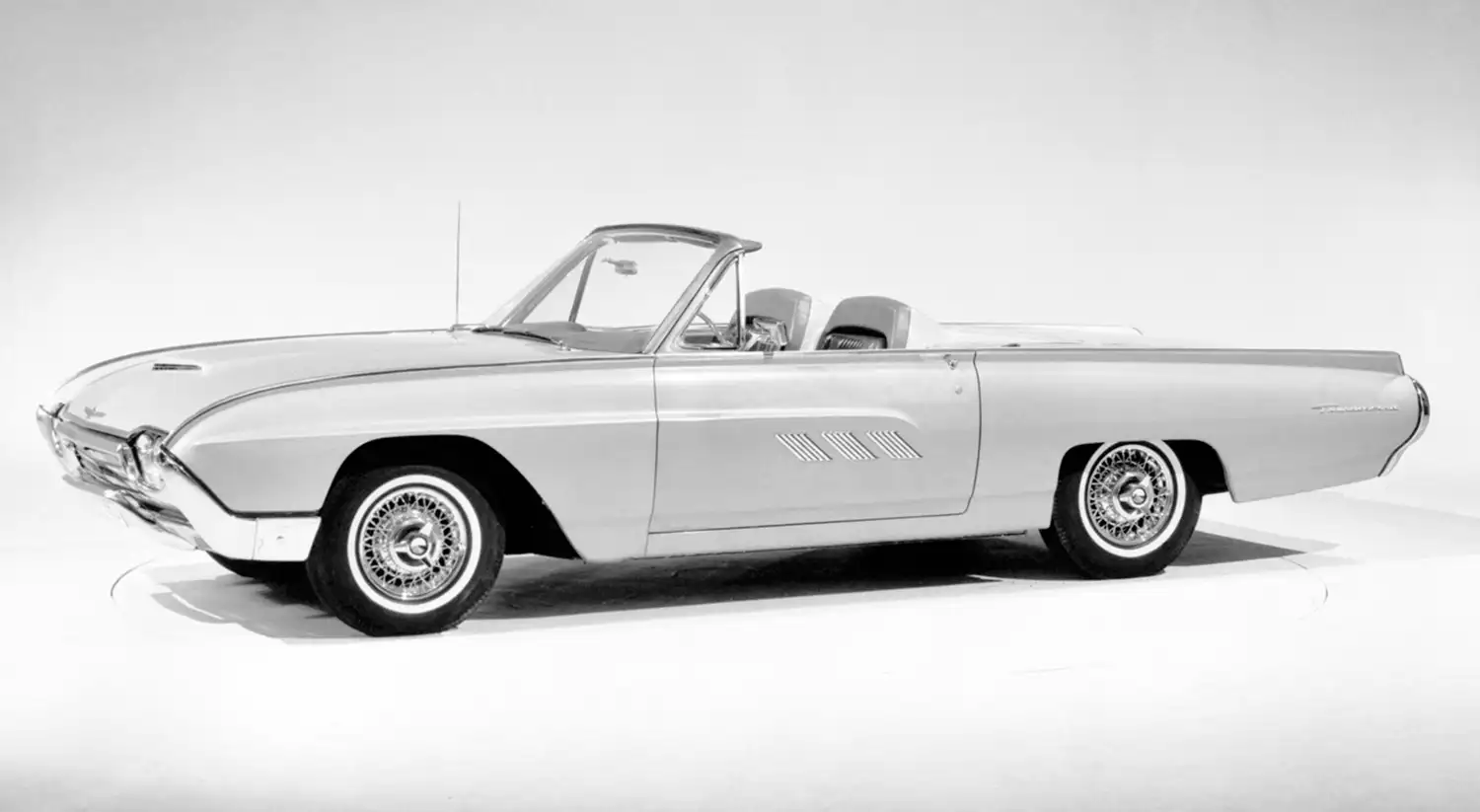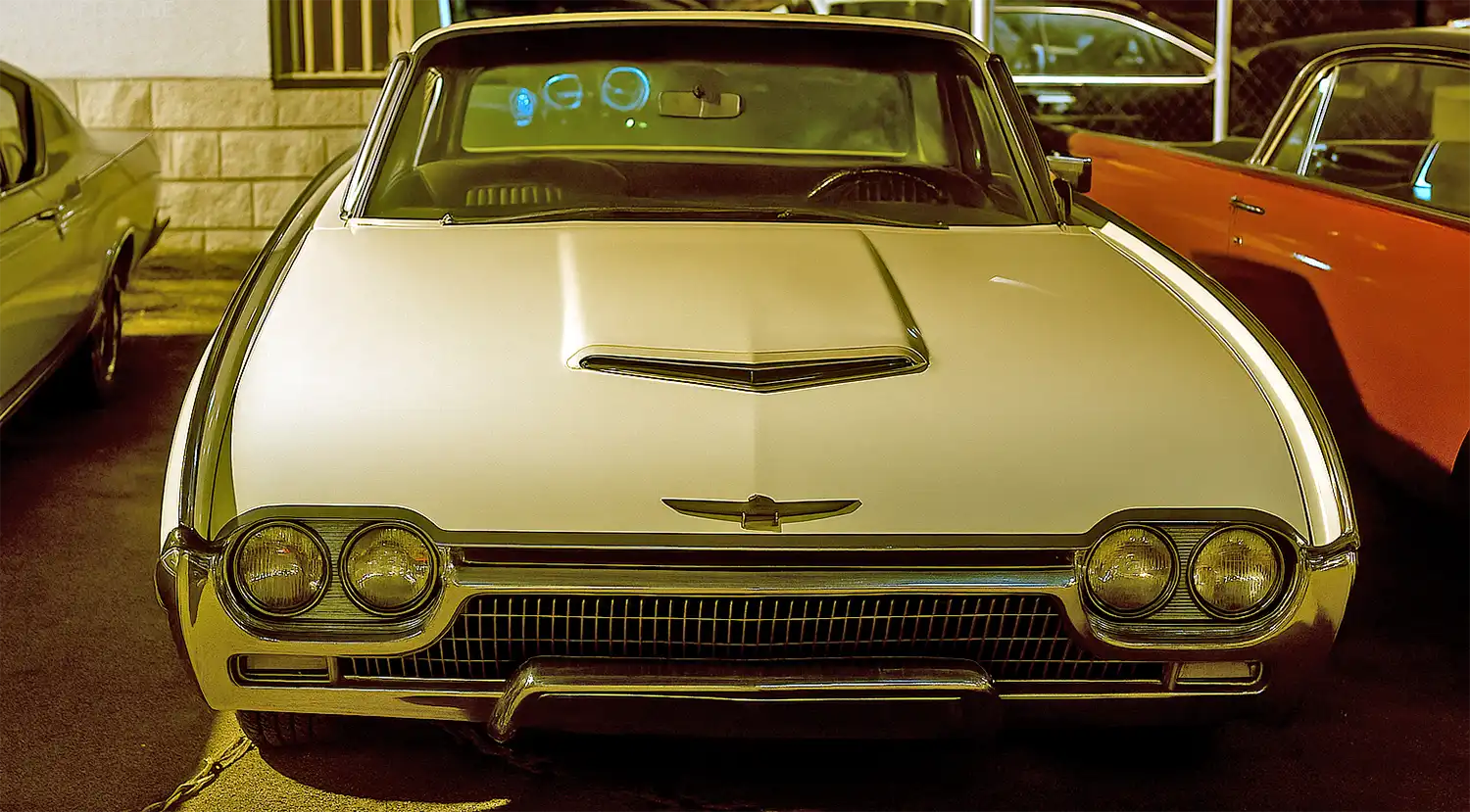
The 1961–1963 Ford Thunderbird stands as one of the most distinct and daring designs of its era. Nicknamed the “Bullet Bird,” this third-generation model embraced a sleek, space-age look paired with V8 power and innovative luxury. It marked a high point in Ford’s efforts to merge performance, design, and prestige into a single package.
1961–1963 Ford Thunderbird Design Redefined the Brand
With the third generation, the Thunderbird took on a more futuristic direction. Inspired by the growing fascination with rockets and space travel, the car introduced a sharp new silhouette. It traded in the previous generation’s conservative curves for bold lines, rounded body panels, and jet-age details.
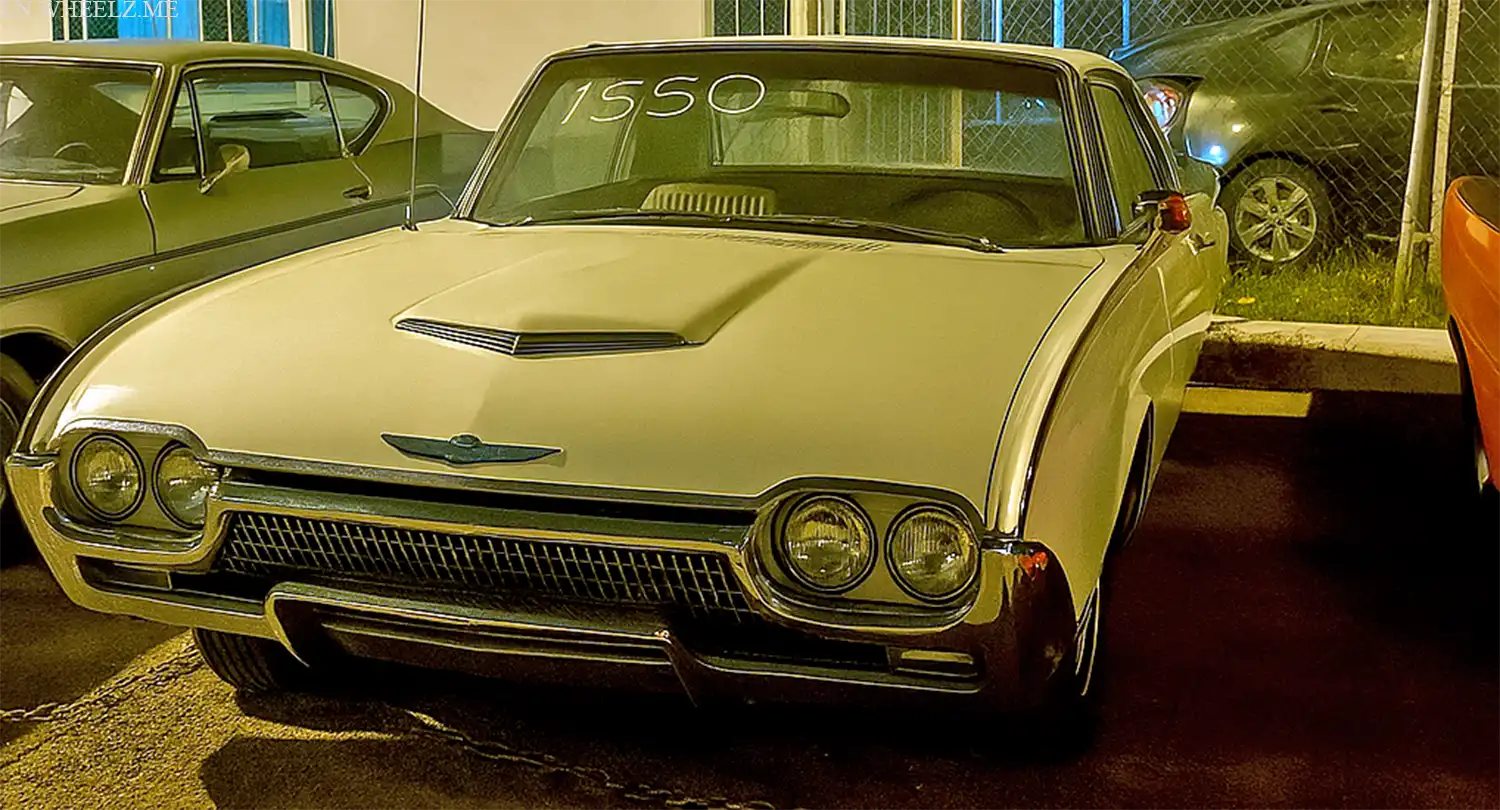
The wide front grille, flanked by quad headlamps, gave the Thunderbird a powerful, wide-set stance. Chrome accents wrapped the car in a layer of sophistication, while the hardtop coupe’s “floating” roof added a distinctive, avant-garde touch. This generation also offered a convertible version, appealing to those who craved the open-air experience without sacrificing elegance.
Interior Innovation and Premium Details
The cabin of the Bullet Bird was just as dramatic as its exterior. It was filled with high-end features that reflected the luxury market Ford was targeting. A standout was the Swing-Away Steering Wheel, which pivoted to the right for easier entry and exit, a futuristic convenience that stunned buyers at the time.
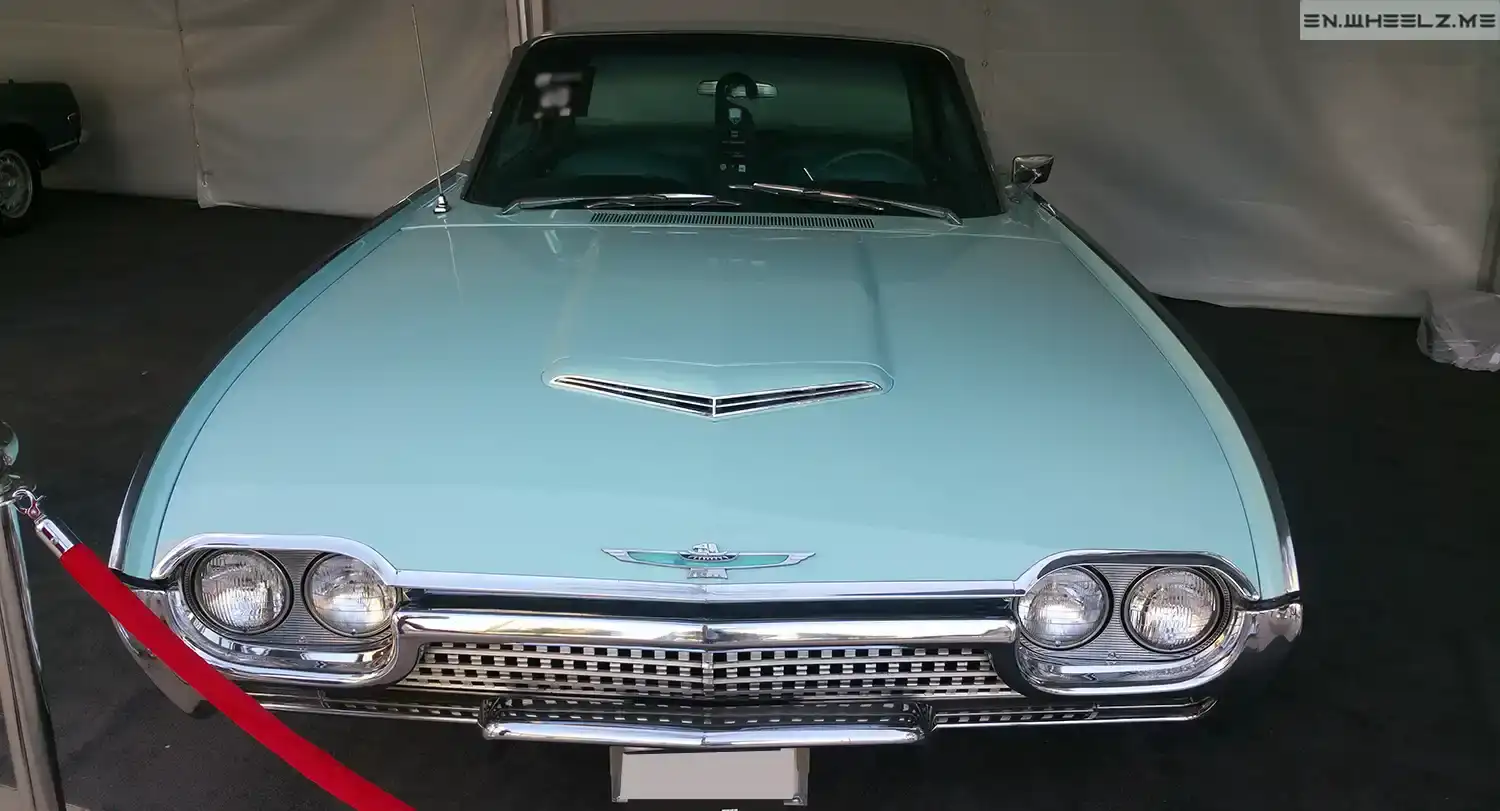
Power-operated windows and seats were standard, adding to the comfort and exclusivity. An AM/FM radio, rare for the era, gave drivers expanded entertainment options, showing how the Thunderbird stayed ahead of the curve.
Power and Performance: What’s Under the Hood?
Performance was a key part of the 1961–1963 Ford Thunderbird’s appeal. Standard across all variants was a robust 390 cubic inch (6.4-liter) V8 engine. It produced 300 horsepower and 427 lb-ft of torque, making highway cruising smooth and effortless.
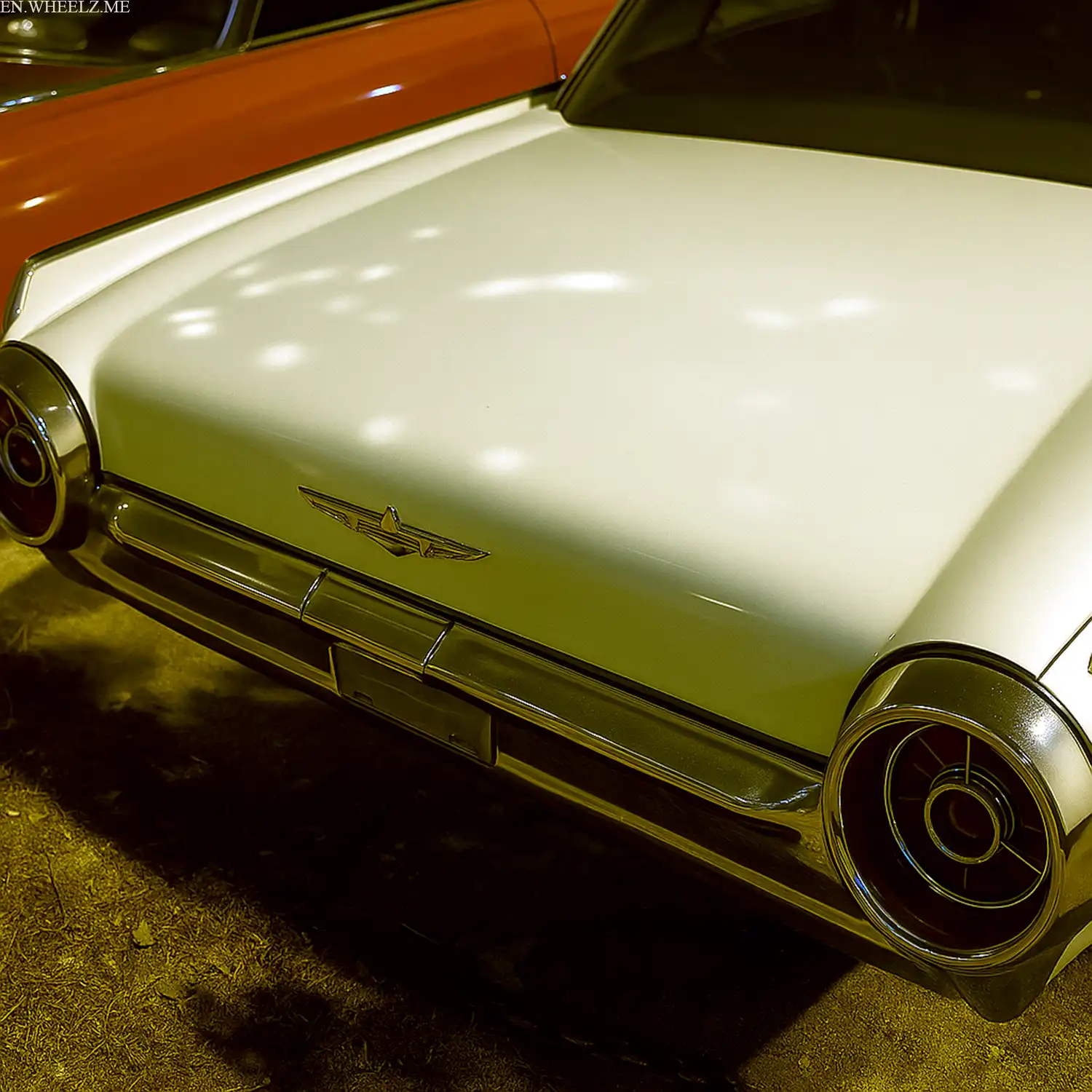
For those seeking extra thrill, the optional M-Code 390 V8 pushed power to 340 horsepower, thanks to triple two-barrel carburetors. All models came with Ford’s reliable three-speed Cruise-O-Matic automatic transmission, ensuring power delivery stayed smooth and responsive.
The Thunderbird also offered advanced suspension for the time, combining coil springs in the front with leaf springs at the rear. This provided a composed ride, even at speed, and made the car feel confident on long road trips.
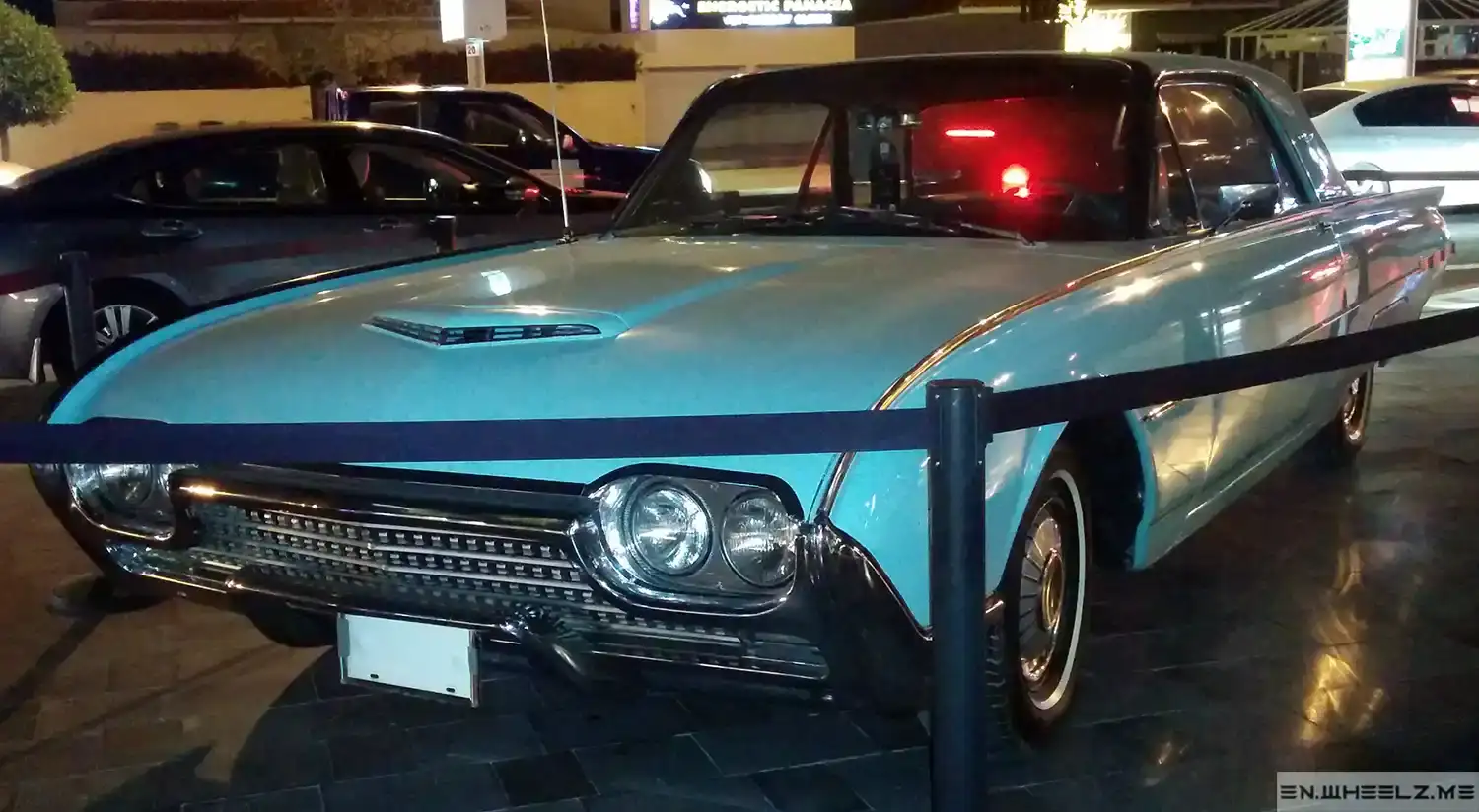
Model Variants: Hardtop, Convertible, and Landau
Buyers could choose from three core variants, each offering unique appeal. The Hardtop Coupe, with its distinctive roofline, became the most popular version. The Convertible followed closely, combining the sleek design with an electrically operated soft top for year-round enjoyment.
In 1962, the Landau version was introduced. This trim featured a vinyl roof and decorative S-bars on the sides, giving it a more formal and upscale personality. Each variant retained the performance and innovation that made the Bullet Bird a standout.

Timeline: A Quick Look at Each Year
1961: The third-generation Thunderbird launched with an all-new look, available as both coupe and convertible.
1962: The Landau trim debuted, along with the high-performance M-Code engine option.
1963: Final production year with minor updates and detail refinements before the fourth generation arrived.
Lasting Legacy of the 1961–1963 Ford Thunderbird
The third-generation Thunderbird wasn’t just a car, it was a cultural statement. Its styling echoed America’s space-age optimism, while its luxury and technology pushed the boundaries of what a personal car could be. Today, the 1961–1963 Ford Thunderbird remains one of the most collectible and admired classic Fords ever built.
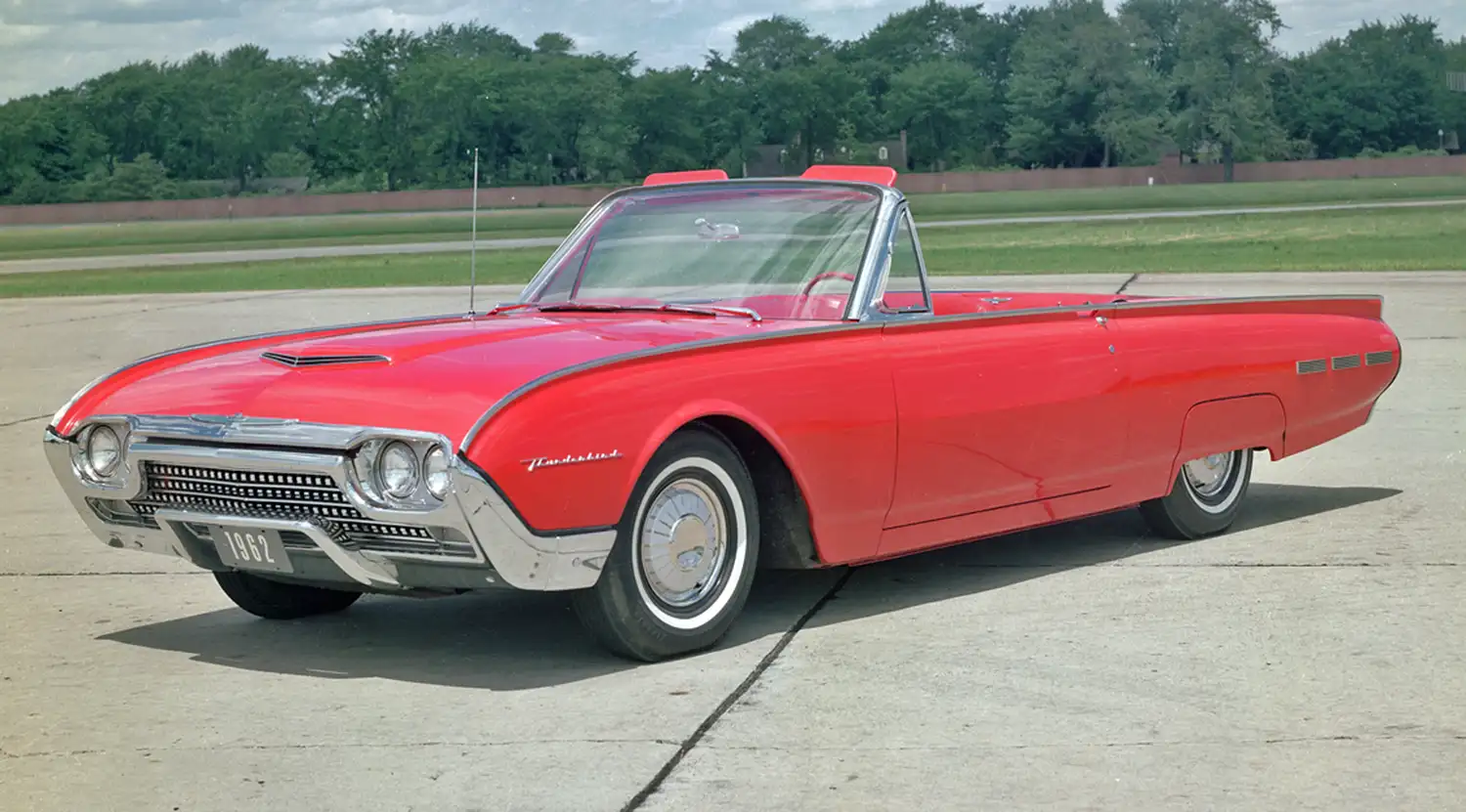
If you’re drawn to the style and spirit of early ’60s American motoring, the Bullet Bird is a shining example of design innovation and V8 power coming together in one unforgettable package.
Disclaimer: Performance specs and features are based on factory data and may vary based on restoration or modifications.
Source of Official Photos: Ford Heritage Vault
